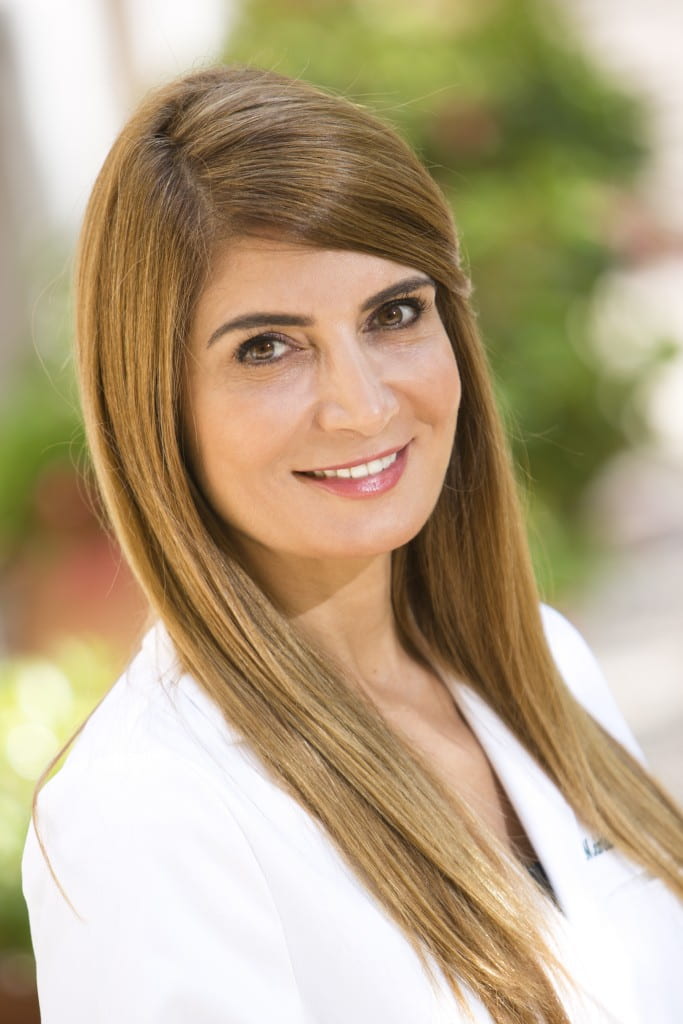From bench to business

The first time Fan-Gang Zeng invented a cochlear implant – a device he believed could help thousands regain lost hearing – things didn’t work out too well. The company that licensed his invention shelved the project. “Today, he says, “it benefits no one.”
The hard lesson – that most inventions never reach the consumer – stayed with Zeng. When he came to UC Irvine and helped create an algorithm allowing cochlear implants to process musical tones, he and his partners worked with UCI’s Office of Technology Alliances to start their own company that tests and manufactures low-cost, high-performance cochlear implants.
“I made a vow that this time the invention would benefit people who need this technology,” says Zeng, an otolaryngology and biomedical engineering professor who co-founded Nurotron Biotechnology Inc.
Like Zeng, more biomedical researchers are working with their institutions to turn their patented discoveries into startup companies. In the heart of the fertile San Diego-to-Los Angeles biotech industries corridor, UCI researchers have started more than two dozen companies, from those pursuing new drugs for Alzheimer’s and autoimmune diseases to others creating medical devices and diagnostic tools for breast and prostate cancer treatment.
“We’re reaching the point where if you’re a young medical researcher and you haven’t started a company, people will want to ask what’s wrong,” says Wes Hatfield, a molecular genetics professor who with computer scientist Richard Lathrop created a process for assembling DNA structures and turned it into the startup company CODA Genomics Inc.
A successful startup can be lucrative, both to the inventor and to the university that patents and licenses the invention. At UCI, 35 percent of patent revenues go to the inventors, 15 percent to their departments, and the other half stays with the campus to invest in research and education.
Startups also fulfill biomedical researchers’ desire to improve human health.
“As professors, we have an obligation to do what we can to bring our discoveries to the taxpayers,” Hatfield says.
The business of starting new businesses
Professors who want to spin inventions into startup companies rely on OTA, which helps them and their business partners by referring them to affiliated groups – such as OCTANe’s LaunchPad and the Orange County Business Incubation Network – where they can develop business plans and find professional managers.
“Universities are getting savvy about assisting faculty startup companies,” says Ronnie Hanecak, OTA’s life sciences licensing director. “Many early-stage inventions don’t interest larger companies. The startup model allows faculty entrepreneurs to develop their invention, giving it a better chance of reaching consumers.”
Orthopedic surgery professor Joyce Keyak felt like “a fish out of water” when she and her colleagues started a business to develop and test radioactive bone cement to treat cancer in the spine.
After working with OTA to secure a license for their pending patent, Bone-Rad Therapeutics got a boost by winning The Paul Merage School of Business’ annual business plan competition in 2007.
“The OTA program helped us develop a business plan, and the prize money paid for our company’s startup fees.” Keyak says.
Infectious diseases researcher Phil Felgner says fledgling companies complement the missions of academe and business, which is why he spun off his protein-microarray technology invention into Antigen Discovery Inc.
“Universities are not in the business of developing applications of this type of technology,” he says. “Product development is what companies do. But through these licensing agreements, spinoff companies can take advantage of research discoveries. This benefits both sides.”
Through its protein-making ability, Antigen Discovery can identify antibodies biotech and pharmaceuticals companies need to develop vaccines, diagnostics and treatments for HIV, cancer and other diseases that affect millions.
Helping the development of new drugs
Felgner is on the forefront of taking information from human genome sequencing to identify a dizzying number of active compounds with pharmaceutical potential. But the chasm separating discovery from clinical trial, in which new drugs are tested on patients, is so vast the National Institutes of Health calls it “the valley of death.”
Many pharmaceutical companies, says biophysics professor George Chandy, are unwilling to do the preliminary work needed to get new drugs to patient trials unless the drugs show exceptional promise.
“I found the best way to overcome this hurdle was for us to do the early studies,” says Chandy, who started Airmid Inc. in 2000 to create autoimmune drugs from shrub and sea anemone compounds.
Airmid is designed to partner with pharmaceutical companies to do the early-stage development and testing needed for clinical trials on patented drugs that treat autoimmune diseases such as multiple sclerosis, diabetes and rheumatoid arthritis.
“It’s a complex process, and it makes more sense to partner out,” Chandy says. “I’m not an expert in drug development, but through this arrangement, we still maintain some control.”
To help startups through “the valley of death,” National Institutes of Health created the Small Business Innovation Research Program, which provides grants to companies that develop products from NIH-funded discoveries.
“The NIH wants to see its funded research translated into health products,” says pathology professor Dr. Dan Mercola. “It needs to show Congress and taxpayers its investment in research pays dividends.”
Mercola is pursing an SBIR grant for his startup company Proveri Inc. to develop a genetic method for predicting the outcome of prostate cancer. The payoff, he says, is that thousands of men who have recurring prostate cancer might survive.
“As a physician and a researcher,” Mercola says, “you feel you’ve accomplished something if your discoveries help people.”
Originally published in Vol. 1, Iss. 1 of ZotZine


